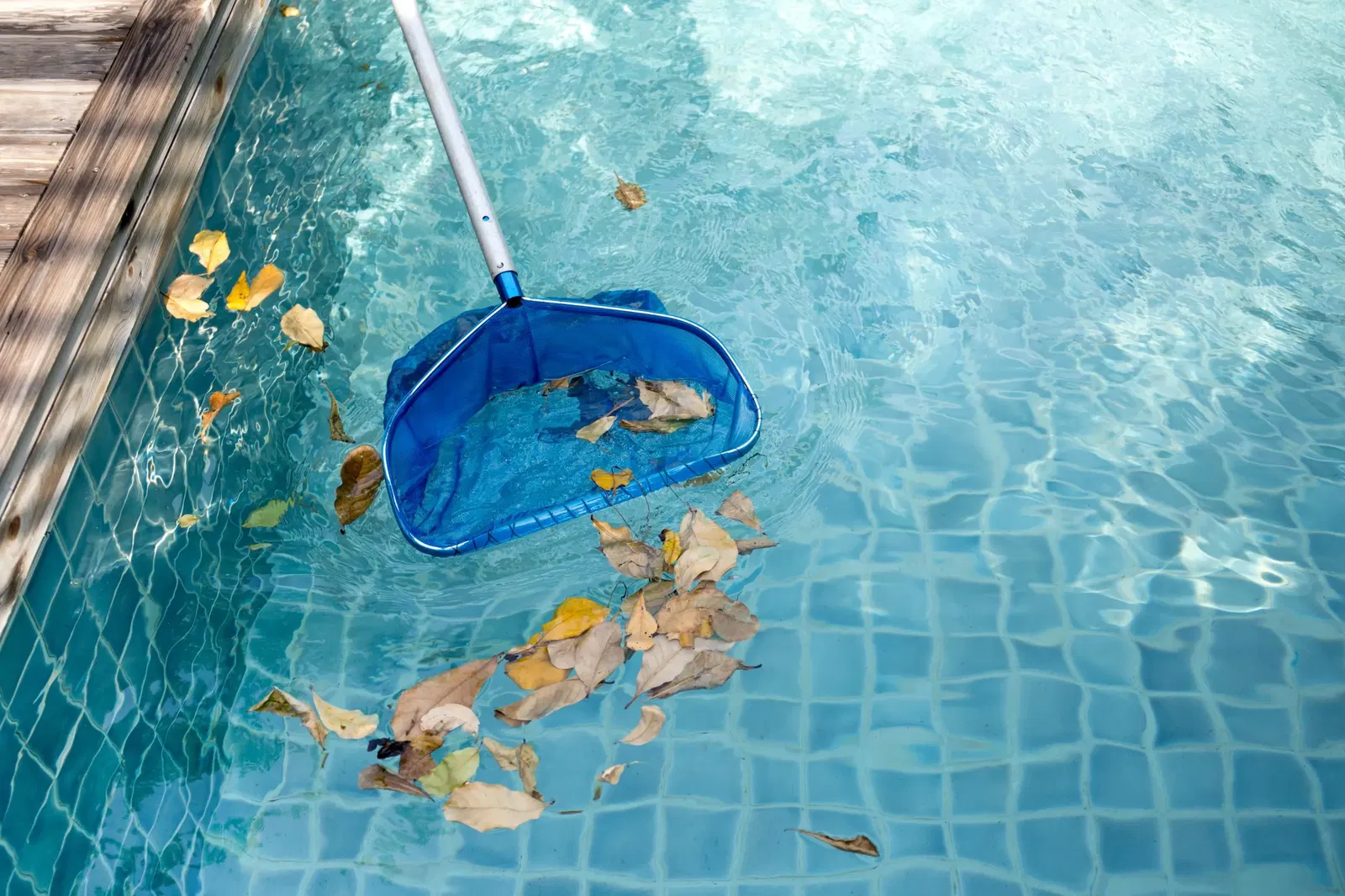Expert Advice: Why Switch Your Hot Tub from Traditional Chlorine to FROG® @ease®
On the fence if you should change out from traditional chlorine? Learn the difference from traditional chlorine and FROG @ease!
Crystal clear waters are within reach! We know, cloudy pool water happens – in fact, it’s the most common pool water problem! That’s why this blog post is devoted to it.
Read on, we’ll explain:
We want to help you keep your pool sparkling throughout the entire swimming season!

When you know what causes cloudy pool water, you can solve – and prevent – it quicker and return to crystal clear water.
Chlorine is the most common sanitizer whether from tablets or a salt generator. Not enough chlorine is one of the leading causes of cloudy pool water; when the chlorine level is too low, it’s unable to sanitize pool water adequately. The result: contaminants in the water build up and compromise clarity.
FROG® products allow you to use significantly less chlorine because they use FROG Minerals in conjunction with chlorine. Together, they kill bacteria 2 ways, with a low level of chlorine and FROG Minerals.
Improper water balance typically results in cloudiness. This is why testing your water regularly is important. Keeping water within the correct levels helps keep it clear.
Total Alkalinity (TA): 80 – 120 ppm
pH: 7.2 – 7.6
Total Hardness: 250 – 400

When the pH rises above the recommended range of 7.2-7.8 it can cause cloudiness and inhibit chlorine effectiveness. High pH levels mean chlorine cannot do its job properly.
Elevated pH can also cause minerals like calcium and magnesium to precipitate out of the water, forming scale and deposits on pool surfaces and equipment.
Filter troubles are another common cause of cloudy pool water. If your pool’s filter system is not working properly, it can’t remove the contaminants that cause cloudy pool water.
If you’re not running the pump at least 8 to 10 hours a day, your pool water is not getting the filtration it needs to keep the water debris-free.
Keep your filter clean so it can do its job. Backwashing your sand or DE filter or rinsing your cartridge filter is good maintenance.
Everything around your pool can cause cloudy water. Trees, bushes, grass near your pool can contribute to cloudy water.
If construction sites are nearby or other sources of dust and debris, it’s possible for those particles to enter the pool and make the water cloudy.
If you pool is uncovered, heavy rainfall means additional water with contaminants is in your pool. Plus, wind can carry dirt, pollen, leaves, and other foreign particles into your pool.

Pets are another source of contaminants. One dog in a pool = 50 swimmers. It’s best to keep your dog out of the pool, but if not, know you’ll be battling contaminants from your “best friend” – including dog hair in the filter.
When your pool is uncovered, prolonged exposure to sunlight and ultraviolet (UV) rays causes chlorine and other pool chemicals to breakdown, reducing their effectiveness.
All to say, more contaminants from sources like those just mentioned, mean more chlorine is needed, more often. And without adequate levels of chlorine, microorganisms can grow, and cloudy water can happen.
Swimmers may introduce even more organic and inorganic matter into the pool. Who knew? Sweat, sunscreen, cosmetics, and urine are a few things each swimmer contributes to water problems.
Chemicals break down the various substances, which uses up chlorine reserves, and leaves less chlorine available to kill germs and keep the water clear.
More swimmers introduce more substances, and the more often swimmers use the pool, the harder chlorine must work. But hey – that’s what the pool is for, right?
It’s just a fact that if more swimmers use the pool more often, it’s more likely you’ll battle cloudy water.
Algae and cloudy water go hand-in-hand. Algae thrives in a pool where water is out of balance, pool filtration is inadequate or a lot of organic matter like leaves or twigs are allowed to linger in the pool.
Chlorine’s job is to fight bacteria. However, when water is out of balance, chlorine can’t work effectively. When debris is in the water, it uses up chlorine.

Old and/or dirty filters make chlorine work harder. Inadequate circulation means chlorine struggles to keep all the water clean.
If any of these factors occurs, even a small amount of algae present in your pool’s water can cause cloudiness.
That’s why the instant you detect algae, we recommend you treat it before correcting the cloudy water.
Don’t fret- we have an article on how you can get rid of algae in your pool here.
Key takeaway: if you notice your pool water is even a bit cloudy, it’s time to take action.
Now that you know the causes of cloudy water – learn how to correct it.
It’s worth repeating: Keep your pool water balanced and you may avoid all kinds of pool problems.
Water balance describes the ideal condition of pool water. That means the water is within ideal levels of Total Alkalinity, pH, Total Hardness and CYA/Stabilizer level.
If your water is cloudy, test it.
Balanced water is within the following ranges:
Frequent testing and adjustment as needed will help you achieve and maintain water balance. Check out our water balancing guide for pools here.
Keep testing your water and making adjustments until it falls within the ideal ranges.
Low levels of chlorine can be a common reason for cloudiness in your pool, so it’s a great idea to shock the water to elevate the chlorine levels. This will sanitize the water and clear any buildup of contaminants.
Follow the manufacturer’s directions on the shock treatment you use to get the adequate amount of shock for your size pool.
Verify that your filter is working properly.
If you haven’t cleaned it, it’s time. Check with the manufacturer’s directions on how to clean your pool filter – when and how to clean a filter often depends on the type of filter you have.
Check for broken parts and replace if needed.
Keeping filters clean and in good condition goes a long way toward maintaining clean, clear water.
One of the easiest fixes for cloudy water is to increase your pool pump run time per day. If you have cloudy water, run the pump 24 hours a day until water clarity is reinstated.
This kickstarts water filtration – an essential part of pool maintenance. Water must pass through the filter at least 2-3 times per day to properly filter and remove contaminants.
Why vacuum? Vacuuming your pool can temporarily agitate debris particles that caused the cloudy water. When these particles become suspended in the pool water, they are more likely to be filtered out.
If cloudy water persists, it may be time to use a pool clarifier to get those foreign particles out. Check with your local dealer, they can help and recommend any needed products.
And, there you have it – clear, balanced pool water!
It’s good practice to check your pump basket, skimmer basket and filter for debris or blockages at least once a week. Critters have been found in skimmer baskets – you’ll want to get them out asap.
A routine check will help you verify that each of these parts are effectively removing debris and organic matter from the water.
Backwash or clean your filter regularly too – keeping the filtration system in tiptop shape helps to avoid buildup that causes cloudy water.
Consider increasing your pump run time if cloudy water happens often. It is recommended that your pump operates for a minimum of 8-10 hours a day.
During the hottest part of the summer, when warm temperatures promote algae growth and water cloudiness, it is a good idea to run your pool pump for longer periods.
An effective way to prevent cloudy water is to shock your pool more frequently.
When and how often to shock your pool:
Regular shock treatments can help the water remain clear and free from contaminants, so you pool is ready when you are!
Every week test your water to make sure the key balancing elements are still in line
If you use Pool FROG®, Flippin’ FROG® or Instant FROG® you’ll have an edge against cloudy water because FROG products kill bacteria 2 ways – with a very low level of chlorine and FROG Minerals.
Check out this video to learn more!
Say goodbye to cloudy pool water with these tips!
Yes, cloudy water happens – but now you know what causes it, how to clear it and how to prevent it.
If you need help, check in with your local dealer. Or check out our FREE FROG Water Care App for help 24/7. Download it now if you haven’t already.
And if you have questions – we’ve got you covered! Call us at 800-222-0169 or email us at customer.service@kingtechnology.com
We also have a chat box on our website for quick easy answers – try it out!
Write a Comment